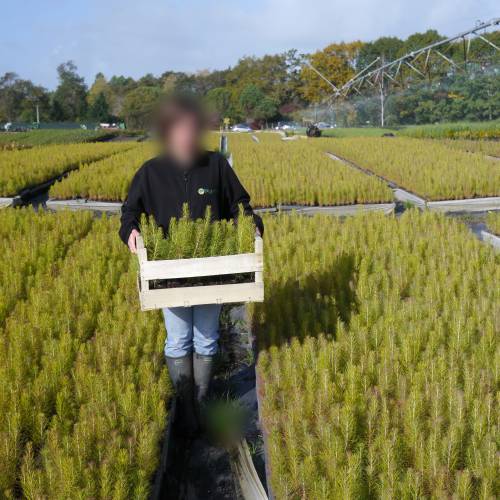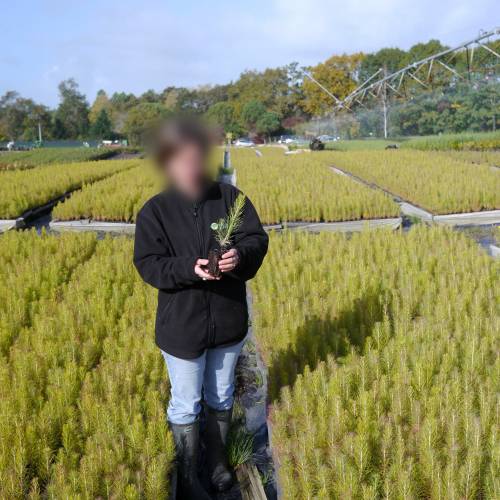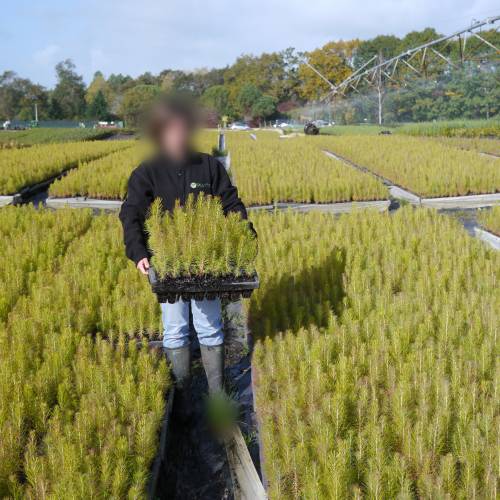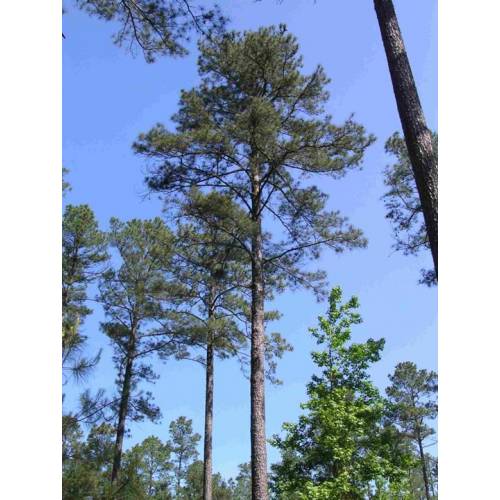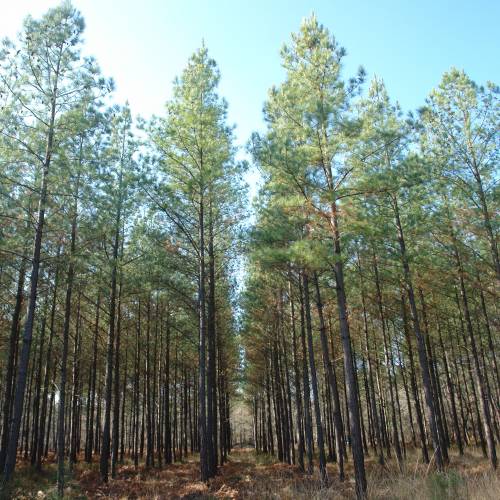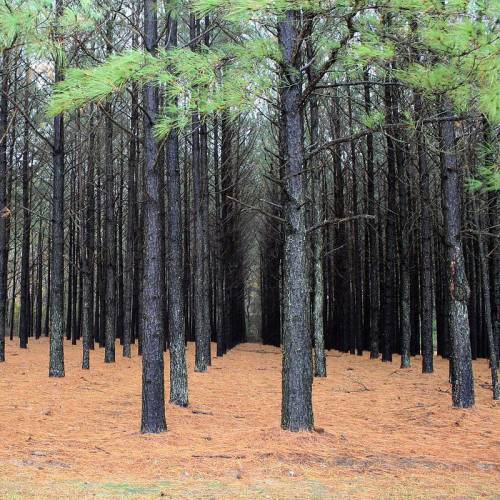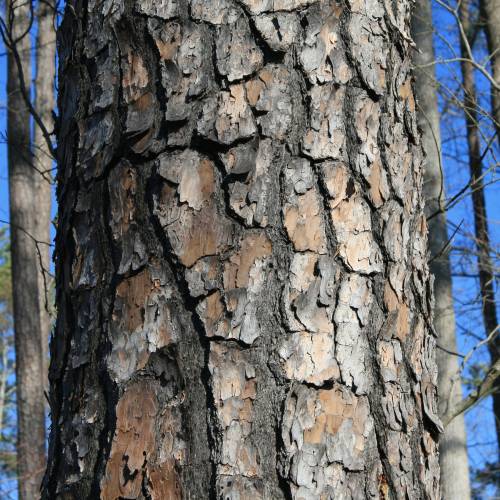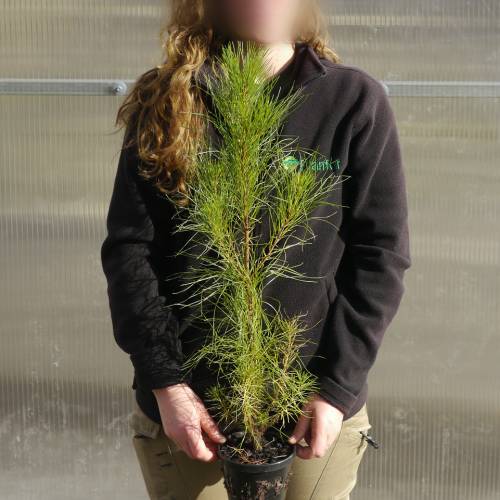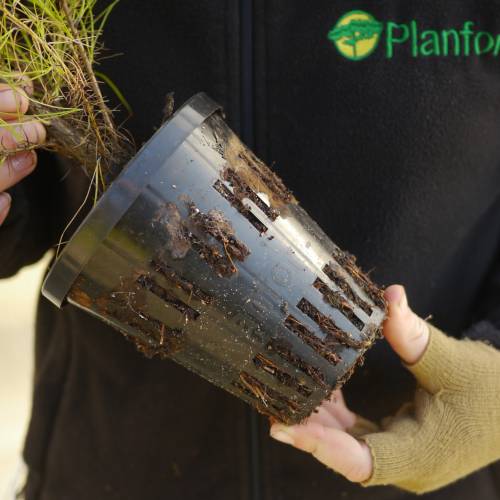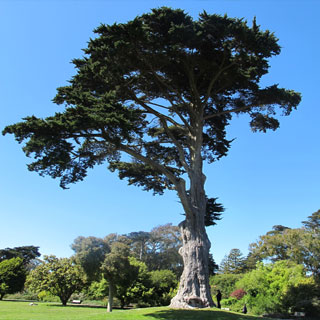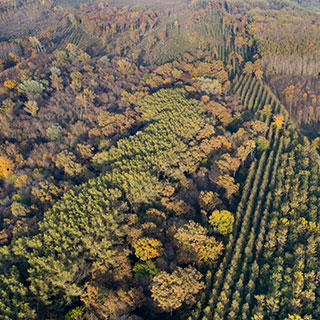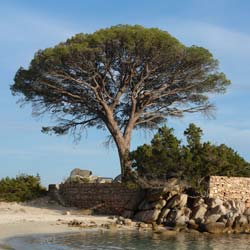
Plants
Pine, loblolly / Pinus taeda
-
30.07 € Loblolly pine - Pinus taeda
90J001 - Pick up in store ONLY
-
11.96 € Loblolly pine - Pinus taeda
90M - Available
-
10.35 € Loblolly pine - Pinus taeda
90N - Available
-
3.75 € Loblolly pine - Pinus taeda
90J - Available
-
1.95 € Loblolly pine - Pinus taeda
90L - Available
-
1.87 € Special Offer - 50%
90JB - Available
-
1.14 € Loblolly pine - Pinus taeda
90U - Available
-
0.99 € Loblolly pine - Pinus taeda
90S - Available
-
0.00 € Loblolly pine - Pinus taeda
90K - Request for quotation
-
Geographical origins: South east of the United States at low altitude. Introduced in 1713.
Adult dimensions: Height up to 30 m (98,4'), width up to15 m (49,2').
Foliage: Evergreen.
Type of soil: Rich.
Hardiness: Hardy to -15°C.
Exposure: Full sun.
Properties and uses:
The rapid growth and straight trunk of this tree make it ideal for planting alone. This tree is fundamental to the forestry of the United States and for some years has been cultivated in the forests of the Landes of Gascogne. The demanding climate can limit the uses. The needles come in threes .
Plant, or reforest Loblolly Pine, Pinus taeda – Foresters Guide
1) The Loblolly Pine (Robinia pseudo-acacia) is it suitable for my land? This genus likes full sun and needs at least 800 mm of rainfall evenly distributed throughout the year. Unlike the Maritime Pine, its rooting system can go through the alios layer, which gives him a good stability. The Loblolly Pine prefers the typical soils of the wet moors, well-drained and without alios. It doesn’t tolerate active lime nor the surface water logging, but it can acclimatize to a maximum altitude of 400 m. The Loblolly Pines planted in France are sensitive to drought, dry grounds must be avoided.
2) Which planting density for my Loblolly Pine plot? (Pinus taeda)
The planting density is the number of plants planted in one hectare (acre). Here it means determining the initial number of young plants and to choosing their repartition in the available space.
The planting density is defined by the gaps in between the lines as well as the spacing in between each plant on a same line.
It is the basics of the silvicultural path which must lead to a final trees’ population of quality and to the fulfilment of the land’s owner set goals.
Advice: When choosing the density, think about the width of the tool which will allow the maintenance of the gaps in between the lines. The space in between the lines must allow clear passage for a tractor-drawn, maintenance tool.
For the Loblolly Pine (Pinus Taeda):
- Density between 1000 and 1300 plants/hectare. This genus is very interesting because it offers short revolutions (20-25 years). It also bears the competition with other plants very well, so the final density can be very dense (800/1000 plants/hectare).
3) How to prepare the soil to plant Loblolly Pine (Pinus taeda)?
In Silviculture, working the soil is a key element in the success of planting. The root system of the tree must take rapidly where planted. Whether the work is done mechanically or manually, we recommend working the soil in its depth for optimum planting.
4) How to plant the Loblolly Pine (Pinus taeda)?
a- Receipt, storage and preparation of the plants before planting
- Upon receipt, place the crates side by side, on a flat surface so as there is no air circulation underneath. Choose a shady spot protected from wind;
- Maintain a good humidity level of the plants on the crates placed on the edges,
- Plan for the possibility of watering if planting is delayed or if the plants require water,
- In case of frost, do not handle the plants and if frost is forecasted for several days, place mulch on the edges.
b- Planting
Our team of professional planters use a planting cane to place the earth-balled plants in situ. This ergonomic, light tool allows quality, quicker planting work. It is also possible to carry out a traditional planting work using a pickaxe or a spade
In all case, you must:
- Dig a hole a little bit larger than the earth-ball ;
- Position it well in the hole;
- Cover it entirely;
Finally, the worker will tamp down the soil carefully with its foot. It is forbidden to press strongly or again to heel-butt the plant to avoid crushing the earth-ball and damage the root system of the plant.
Video on planting using a planting cane
Buy Planting cane
5) How to limit weeds on my Loblolly Pine plot (Pinus taeda) ?
During the first years, it is essential to eliminate all self-propagating plants. Not controlled they are going to be in competition with your plants and are going to deprive the young trees of the vital elements they require to grow (water, light and nutritional elements). You must therefore eliminate mechanically this unwanted competition until the trees are big enough to be able to dominate it.
Two types of operations are possible after planting:
Manual clearing around the plants
It is in fact acts often carried out using portable thermic Strimmers or billhooks to clear plants on a line or around the plants themselves.
Mechanical clearing of the space in between the lines
These actions are done using cutters and flail mowers, horizontal or vertical cutters, mounted on mini excavators or tractors. As a result, they cannot be undertaken outside the spaces available between the tree lines (seedlings or plants).
6) How to protect my young False Acacia plants from wildlife (Pinus taeda) ?
There is a necessity to protect the plot as soon as the population’s density of Cervidae (deer and roe deer in particular) risk leading to significant damage such as undergrowth of the plants or friction of the stems. Sometimes, the setting up of plants’ protection is also necessary as soon as the rodents’ population (rabbits, hares, coypu, voles...) are locally important.
3 types of protections are possible:
- Individual, mechanical Protections ( dissuasive netting, photo-degradable tubes,...)
- Protection by total wire-fencing of the plot,
- Protection by applying a repellent on each plant or on the borders of the plot.
Catalogue Protections against Game

